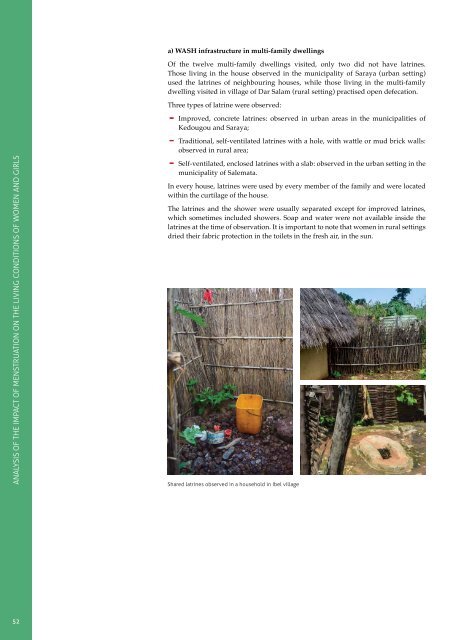1wE4FuZ
1wE4FuZ
1wE4FuZ
You also want an ePaper? Increase the reach of your titles
YUMPU automatically turns print PDFs into web optimized ePapers that Google loves.
a) WASH infrastructure in multi-family dwellingsOf the twelve multi-family dwellings visited, only two did not have latrines.Those living in the house observed in the municipality of Saraya (urban setting)used the latrines of neighbouring houses, while those living in the multi-familydwelling visited in village of Dar Salam (rural setting) practised open defecation.Three types of latrine were observed:––Improved, concrete latrines: observed in urban areas in the municipalities ofKedougou and Saraya;––Traditional, self-ventilated latrines with a hole, with wattle or mud brick walls:observed in rural area;Analysis of the impact of menstruation on the living conditions of women and girls––Self-ventilated, enclosed latrines with a slab: observed in the urban setting in themunicipality of Salemata.In every house, latrines were used by every member of the family and were locatedwithin the curtilage of the house.The latrines and the shower were usually separated except for improved latrines,which sometimes included showers. Soap and water were not available inside thelatrines at the time of observation. It is important to note that women in rural settingsdried their fabric protection in the toilets in the fresh air, in the sun.Shared latrines observed in a household in Ibel village52



